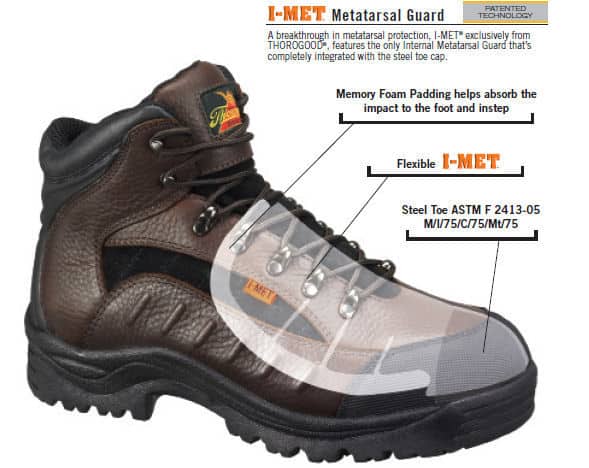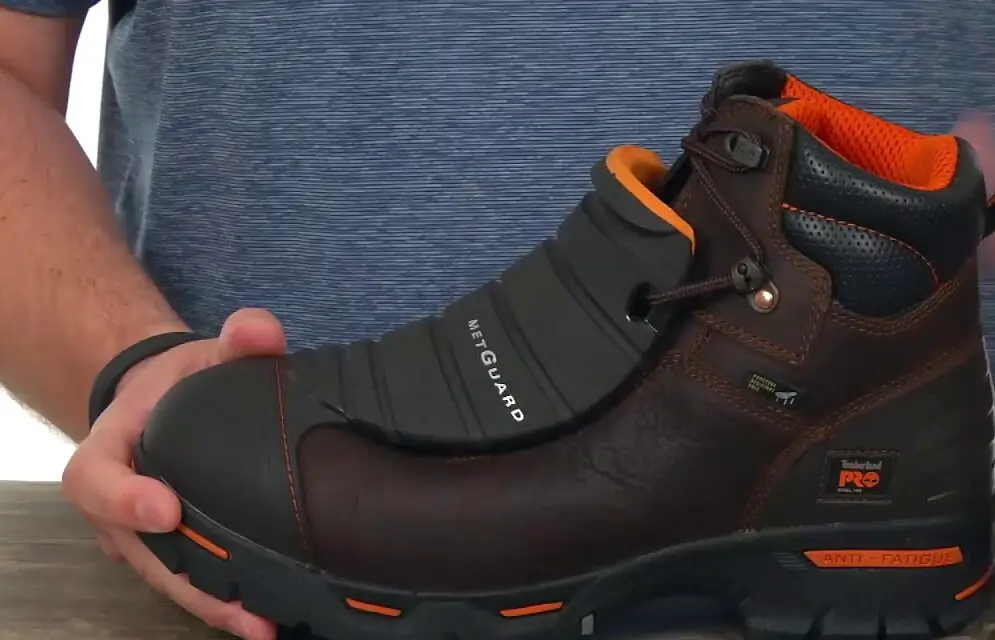Why Met Guard Protection Matters in Work Boots
Metatarsal injuries are a common occurrence in many workplaces, and they can have serious consequences for workers. According to the Bureau of Labor Statistics, foot injuries account for approximately 10% of all workplace injuries, with metatarsal fractures being one of the most common types of foot injuries. Work boots with met guard provide an essential layer of protection against these types of injuries, shielding the metatarsal region from impact and compression. Without met guard protection, workers are at risk of suffering from metatarsal fractures, bruising, and even long-term damage. This is especially important for workers in industries such as construction, manufacturing, and warehousing, where heavy objects and equipment are frequently handled. By investing in work boots with met guard, workers can significantly reduce their risk of metatarsal injuries and ensure a safer, healthier work environment.
Understanding Met Guard Technology: What to Look for in Work Boots
When it comes to met guard technology in work boots, there are several types to consider. Composite met guards, made from materials such as plastic or carbon fiber, offer a lightweight and flexible solution for metatarsal protection. Steel met guards, on the other hand, provide a more robust and durable option, often used in heavy-duty work boots. Alloy met guards, a combination of metals, offer a balance between strength and lightweight performance. Regardless of the material, the primary function of met guard technology is to absorb and distribute impact, reducing the risk of metatarsal injuries. When selecting work boots with met guard, it’s essential to consider the specific job requirements and hazards, as well as the individual’s foot type and personal comfort preferences. By understanding the different types of met guard technology, workers can make informed decisions about their foot protection and choose the right work boots with met guard for their needs.
How to Choose the Right Work Boots with Met Guard for Your Job
When selecting work boots with met guard, it’s crucial to consider several factors to ensure the right fit for your job requirements and personal needs. First, assess the specific hazards and risks associated with your job, such as heavy objects, sharp edges, or slippery surfaces. This will help determine the level of met guard protection required. Next, consider your foot type, including any existing foot conditions or sensitivities. Work boots with met guard should provide a comfortable, snug fit without compromising mobility. Additionally, think about your personal comfort preferences, such as breathability, insulation, and moisture-wicking properties. Finally, evaluate the durability and quality of the work boots, including the materials used, stitching, and overall construction. By taking these factors into account, workers can choose the right work boots with met guard for their job, ensuring optimal protection, comfort, and performance.
Top Rated Work Boots with Met Guard: Reviews and Comparisons
When it comes to selecting the best work boots with met guard, there are several top-rated options to consider. Timberland’s PRO Boondock Work Boot, for example, features a rugged outsole and a composite met guard for superior protection. Dr. Martens’ Ironbridge Work Boot, on the other hand, boasts a steel met guard and a comfortable, breathable design. Thorogood’s American Made Work Boot, meanwhile, offers a durable alloy met guard and a slip-resistant outsole. Other notable brands include Carhartt, Dickies, and Magnum. When comparing work boots with met guard, consider factors such as protection level, comfort, durability, and price point. Look for boots that meet or exceed industry standards for met guard protection, such as ASTM or ANSI certification. By researching and comparing top-rated work boots with met guard, workers can make informed decisions about their foot protection and choose the best option for their job requirements and personal needs.
What to Expect from a Good Pair of Work Boots with Met Guard
A good pair of work boots with met guard should provide a combination of durability, comfort, and protection. In terms of durability, look for boots with high-quality materials, such as full-grain leather or rugged synthetic materials, and sturdy construction that can withstand the demands of the job. Comfort is also crucial, as workers need to be able to wear their boots for extended periods without discomfort or fatigue. Features such as cushioning, breathable linings, and adjustable lacing can help ensure a comfortable fit. Most importantly, a good pair of work boots with met guard should provide reliable protection against metatarsal injuries. This includes a met guard that is designed to absorb impact and distribute pressure away from the metatarsal bones. Additionally, features such as slip-resistant outsoles and ankle support can help prevent other types of injuries. By understanding what to expect from a good pair of work boots with met guard, workers can make informed decisions about their foot protection and choose the right boots for their job requirements and personal needs.
Common Misconceptions About Work Boots with Met Guard
Despite the importance of met guard protection in work boots, there are several common misconceptions that may deter workers from investing in a good pair. One of the most prevalent misconceptions is that work boots with met guard are heavy and uncomfortable. However, many modern work boots with met guard are designed to be lightweight and comfortable, without compromising on protection. Another misconception is that work boots with met guard are only necessary for high-risk jobs, such as construction or manufacturing. In reality, met guard protection is essential for any job that involves heavy lifting, bending, or repetitive movements. Additionally, some workers may believe that work boots with met guard are too expensive or not worth the investment. However, the long-term benefits of met guard protection, including reduced risk of injury and improved job performance, far outweigh the initial cost. By addressing these common misconceptions, workers can make informed decisions about their foot protection and prioritize their safety on the job.
Work Boots with Met Guard: A Worthwhile Investment for Your Safety
Investing in a good pair of work boots with met guard is a crucial decision for any worker who wants to prioritize their foot safety on the job. While it may seem like an additional expense, the long-term benefits of met guard protection far outweigh the initial cost. By wearing work boots with met guard, workers can reduce their risk of metatarsal injuries, which can lead to chronic pain, missed workdays, and even long-term disability. Furthermore, work boots with met guard can improve job performance by providing comfort, support, and confidence, allowing workers to focus on their tasks without distraction. In addition, many employers and insurance companies recognize the importance of met guard protection and may offer incentives or discounts for workers who wear work boots with met guard. By investing in a good pair of work boots with met guard, workers can take a proactive approach to their foot safety and reap the rewards of a healthier, more productive work life.
Conclusion: Protect Your Feet with the Right Work Boots
In conclusion, met guard protection is a crucial feature to consider when selecting work boots. By understanding the importance of metatarsal protection, the different types of met guard technology, and how to choose the right work boots with met guard, workers can make informed decisions about their foot safety. With top-rated work boots with met guard from brands like Timberland, Dr. Martens, and Thorogood, there are plenty of options to choose from. Remember, investing in a good pair of work boots with met guard is a worthwhile investment for your safety, providing long-term benefits for foot health and job performance. Don’t compromise on your foot safety – prioritize it with the right work boots with met guard. By doing so, you can reduce the risk of metatarsal injuries, improve your job performance, and enjoy a healthier, more productive work life.







